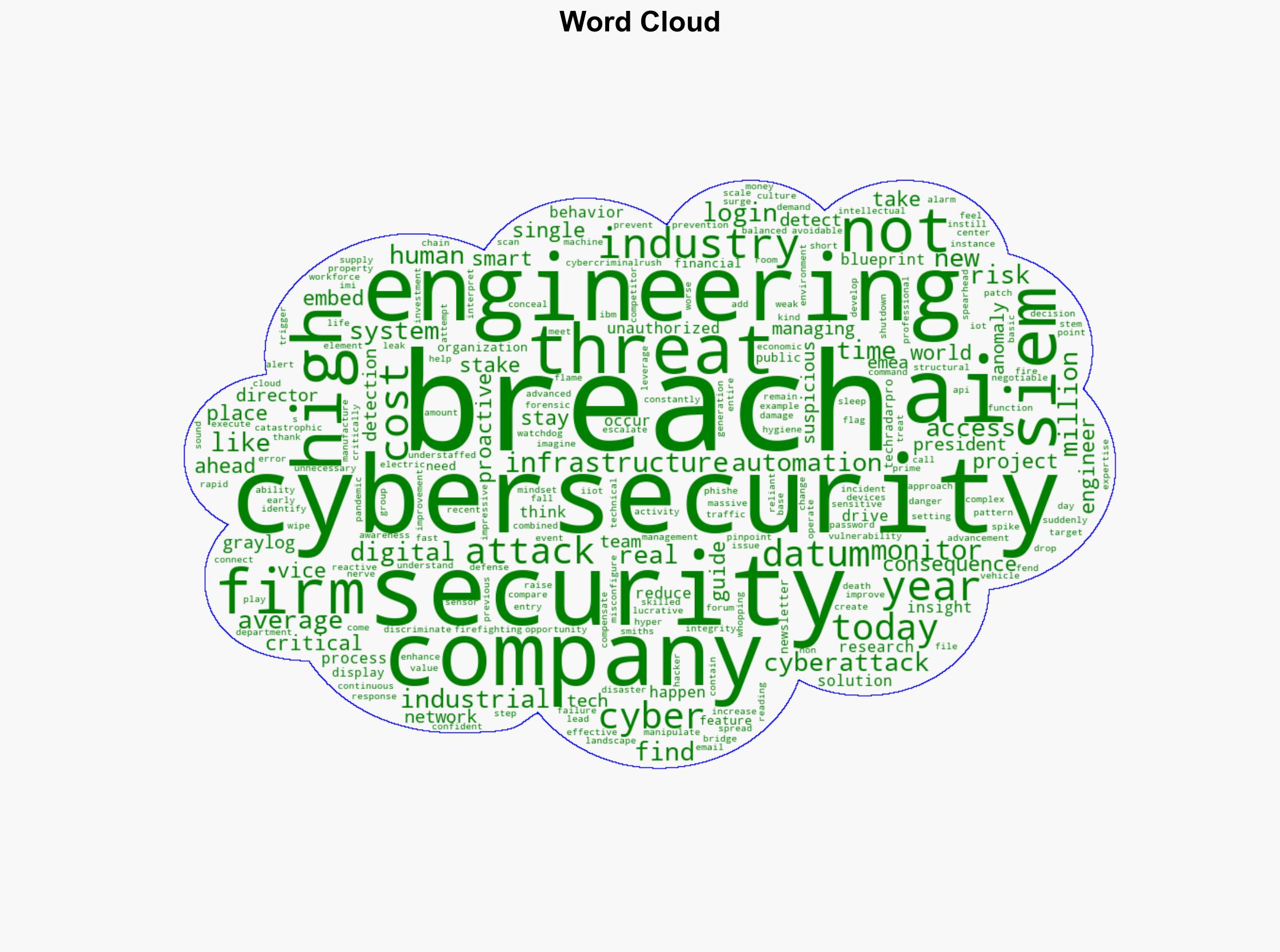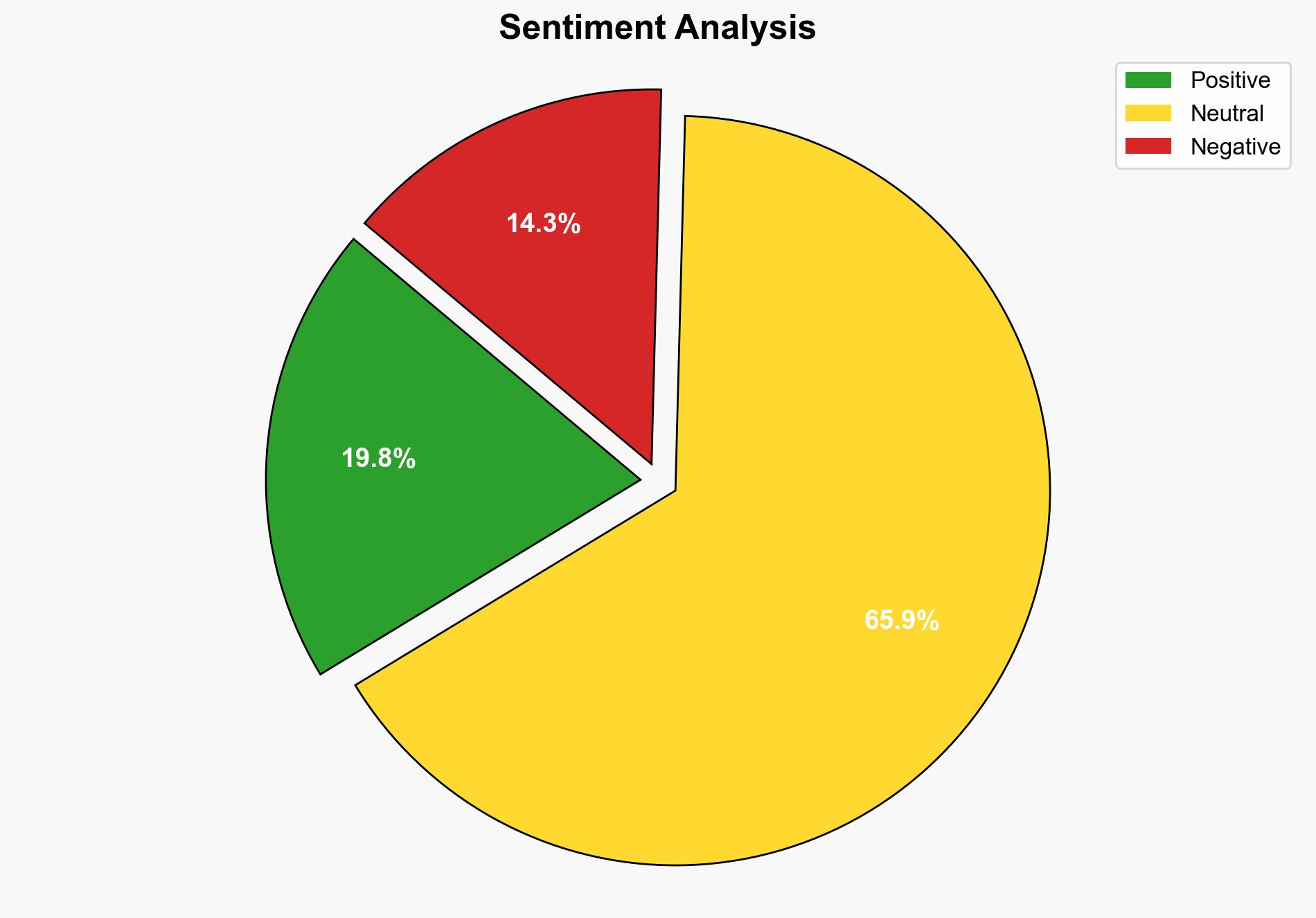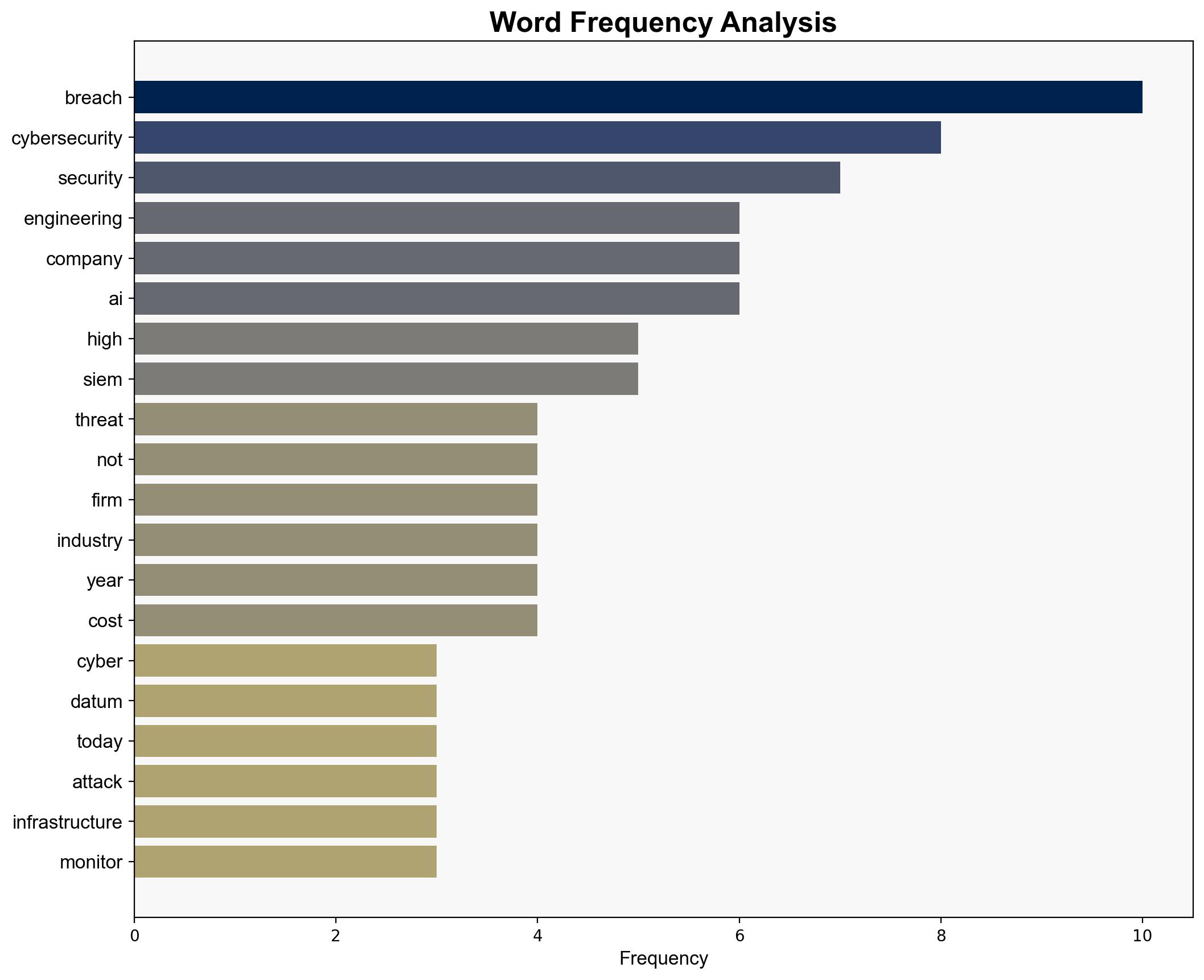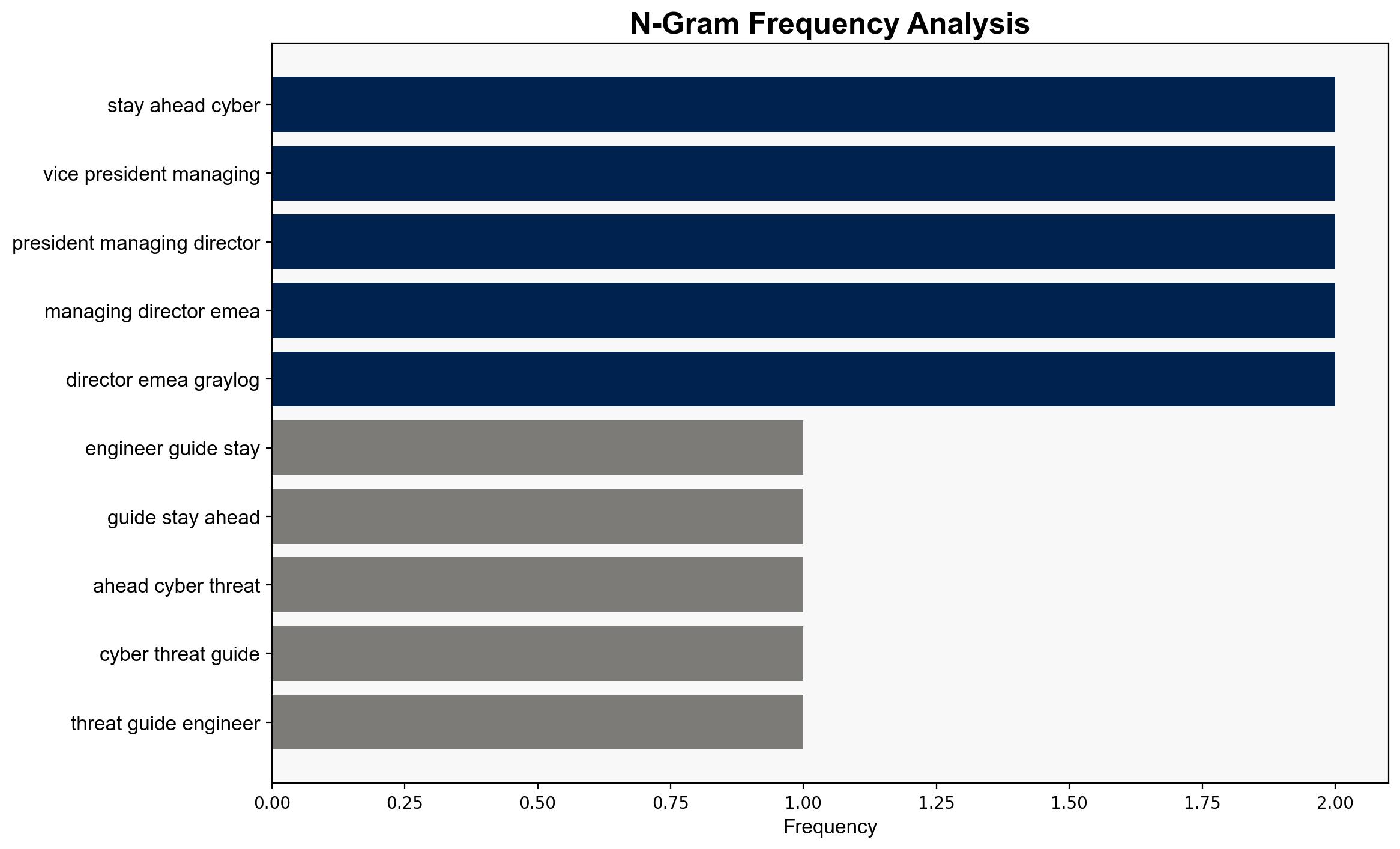The engineer’s guide to staying ahead of cyber threats – TechRadar
Published on: 2025-04-18
Intelligence Report: The engineer’s guide to staying ahead of cyber threats – TechRadar
1. BLUF (Bottom Line Up Front)
Engineering firms are increasingly targeted by cybercriminals due to their valuable data and critical infrastructure. Current cybersecurity practices are often reactive, leaving firms vulnerable. Implementing proactive measures, such as Security Information and Event Management (SIEM) systems and AI-driven solutions, is essential to mitigate these risks. Immediate action is required to shift from reactive to preventive cybersecurity strategies.
2. Detailed Analysis
The following structured analytic techniques have been applied:
Analysis of Competing Hypotheses (ACH)
Possible causes for security breaches include inadequate cybersecurity infrastructure, lack of continuous monitoring, and insufficient employee training. Motivations for attacks are primarily financial gain, intellectual property theft, and disruption of critical infrastructure.
SWOT Analysis
Strengths: Increasing adoption of advanced technologies like SIEM and AI.
Weaknesses: Reactive security measures and underinvestment in cybersecurity.
Opportunities: Leveraging AI for real-time threat detection and response.
Threats: Evolving cyber threats targeting Industrial IoT and cloud-based systems.
Indicators Development
Warning signs include increased unauthorized access attempts, unusual network traffic patterns, and anomalies in system behavior. Continuous monitoring and analysis of these indicators are crucial for early threat detection.
3. Implications and Strategic Risks
The engineering sector faces significant risks from cyber threats that can disrupt operations and compromise safety. The economic impact of breaches can be severe, affecting company reputation and financial stability. Politically, vulnerabilities in critical infrastructure can have national security implications.
4. Recommendations and Outlook
- Adopt a proactive cybersecurity approach by integrating SIEM and AI-driven solutions for continuous monitoring and rapid response.
- Invest in employee training programs to enhance cybersecurity awareness and response capabilities.
- Develop scenario-based contingency plans to address potential cyber incidents and minimize impact.
- Regularly update and patch systems to close vulnerabilities and reduce entry points for attackers.
5. Key Individuals and Entities
IMI, Smiths Group, Graylog.





